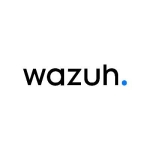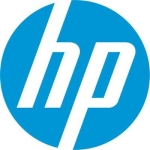What is our primary use case?
We implement it on client endpoints and server endpoints. We also integrate it with Microsoft Entra ID for the identity part because the security part of Microsoft Defender is completely correlated to user activity.
How has it helped my organization?
Microsoft Defender XDR is important for the mitigation of threats, visibility of vulnerabilities, and identification of issues within the environment. It has been a leader in the market for consecutive years.
We have a single pane of glass for servers, endpoints, and mobile devices. It makes it very easy to identify which devices are at risk when you go to the vulnerability part. There are also recommendations. Especially for me, these recommendations are gold. You see exactly what you need. Microsoft Defender XDR is completely different from your antivirus solution. It detects based not only on signatures but also on the policies, so you are forced to harden your servers or client endpoints, which makes a much stronger solution.
Being a Microsoft solution, it integrates well with other Microsoft systems. The majority of the systems are Microsoft-based. This integration comes without the need to install a client on the local machine. It makes the life of the operators and whoever implements it way easier.
Microsoft has a range of Defender products. There is Defender XDR, Defender for Endpoint for clients and servers, and Defender for Office 365 which protects mailboxes, SharePoint, and OneDrive. Then you have Defender for Identity, which is integrated with Defender XDR. You also have Defender for Cloud Apps that is connected to Defender XDR. When integrated, you can get sources of threats, for example, from Defender for Identity connected directly on the endpoint. Defender for XDR protects the endpoint devices against ransomware and different threats. We need to see more holistically at all the Defender solutions instead of isolating them. There is an element of correlation of identity. For me, nowadays, it is much more important to protect the identity than the endpoint device itself because the majority of the vectors are coming from identity attacks. They are more than the viruses attacking the endpoints.
I do not have much experience with Linux as such. I am very focused on Microsoft solutions. I never focused on Linux, but I have worked with my peers, for example, on projects to enroll Linux devices. We needed to prepare simple scripts or puppet scripts to automate the process of pushing policies and automate the update of the antivirus. It is trickier. It is more complex to manage because of the nature of Linux itself. It is not as straightforward or integrated as Microsoft solutions, such as Microsoft Windows 11 or Windows Server, but Microsoft Defender still covers everything. There are some limitations regarding Linux servers and endpoints because you need to have the version of Linux that is supported by Defender, but at the same time, with whatever is supported, Microsoft Defender does the job. Linux and Windows operating systems work in different ways, and the way that antivirus interacts with the operating system is completely different. There is role-based access control in Windows. You have local administrators and domain administrators. On Azure, you define roles for users to access certain environments. On Linux, you have the root user, and as a core front operation system embedded in it, you do not have the least privileged access management solution. This comes with a price because you need to control much better to whom you give access. SSH keys, for example, are very important to be protected, which is a different protocol than the Remote Desktop Protocol (RDP). You need to protect Linux servers in different ways, which is very different from Windows. Defender or Defender XDR extends the protection, especially when you need to connect with Azure Ark, which is part of Microsoft services.
Microsoft Defender XDR has consolidated security solutions. Previously, you had an antivirus, and you had a different type of endpoint protection for servers, and then you had a web content filtering solution, which is part of Microsoft Defender XDR. It consolidates all the extra products that you require, but it does not give all the elements. It is not a firewall. It is not a web application firewall (WAF). It does not give you everything required as a security solution, but as an extended detection and response system, it gives a lot of leeway for you to meet your security objectives. If we compare it with other products, Defender XDR is much more complete than the competition.
What is most valuable?
The integration, visibility, vulnerability management, and device identification are valuable. You can automatically deploy the clients depending on how you are implementing the solution.
What needs improvement?
The web filtering solution needs to be improved because currently, it is very simple. It is very important.
Integrations with Linux should be done in a better way. With the AI world and the security part, things are going to be much simpler and easier to set up, configure, deploy, and maintain. I am looking forward to new releases of Microsoft Defender XDR to have better integrations, but the web filtering solution is the main pain point.
For how long have I used the solution?
I have been working with Microsoft Defender since it was released. It has been about four years. I started working with it when it was not even called Defender. It was Advanced Threat Protection. It then changed to Defender for Endpoints and then to Defender XDR.
What do I think about the stability of the solution?
I have not experienced many bugs or issues. Sometimes, you have delays in the response, but that is due to connectivity issues. It is a cloud-based solution, so you cannot expect to have a real-time response, but this can be improved by Microsoft. I know that they are trying to improve. I would rate it a nine out of ten for stability.
What do I think about the scalability of the solution?
It is ultra-scalable. I would rate it a ten out of ten for scalability.
How are customer service and support?
I love Microsoft, but due to its growth, the overall support quality has decreased a lot. My recent experience with support was not that good. For the Defender part, it was not that bad. I would rate their support a six out of ten. Their response time and knowledge could be better.
How would you rate customer service and support?
Which solution did I use previously and why did I switch?
I work with Trend Micro. I work with Kaspersky. Trend Micro has its own cloud-based solution similar to Microsoft Defender XDR, but it is not the same. It has some problems. It is not as effective as Microsoft Defender XDR. Especially whenever it comes to vulnerabilities and recommendations, Microsoft Defender XDR is amazing because of its integration with Microsoft operating systems. Microsoft is much ahead of the competition.
I would never touch Kaspersky again. It is not because it is a bad product. It has been a very good product for several years, but because of the Russia and Ukraine war, it has become a prohibitive product at least in Malta to use. A lot of customers moved from Kaspersky immediately to different products. The majority of them went to Microsoft Defender XDR, especially because it also comes integrated with some products. Microsoft is bundling its own products, and Microsoft Defender XDR is very attractive to implement as a cloud solution. It is a no-brainer for the customer. That is where Microsoft has an advantage over Trend Micro, Kaspersky, and other vendors.
How was the initial setup?
With Cloud servers, it is easy and very straightforward. You can almost do it automated, but in a hybrid environment, you have the element of the on-prem servers, which becomes a little bit more complex. You also have the element of Azure that simplifies the deployment process.
It can be difficult to deploy in the beginning because you need to consider different products and elements, but the deployment is the simplest part of the onboarding process. The configuration process is much more difficult, especially because on servers, you need to deploy group policy objects (GPOs) and set all the policy options to protect from the vulnerabilities. You need to configure the antivirus to protect from exploits. There are so many features and configuration possibilities that it becomes more complex to implement on server endpoints. On the client side, it is easy, especially when you implement Defender through Intune, which is the mobile device management solution of Microsoft. With a platform like Intune, it becomes easy because you have policies that assist you already out of the box, such as security baseline policies. With Intune, it is much easier to set a policy. It is way less complex to implement. When you have a hybrid environment with endpoints joined on a local active directory, the complexity increases because you need to deploy GPOs as well if you do not have Intune involved. It is complex to implement.
The deployment takes a few weeks, but it also depends on the size of the customer. If you have just Windows 11 client endpoints, it is easier to implement. Client endpoints are easy to implement because you do not need to test that much. You configure the policies. The policies are all known because of our experience. When it comes to servers, it depends on the server's workload. It depends on what type of service you have installed on the server side. If it is the IIS web server, you need to test certain policies that can block that service. You cannot simply go and implement the best practices of the policies because then you are going to make the server unusable. You are going to generate downtime, which is not ideal and also not the objective, so you need to be very knowledgeable on the infrastructure side and the security side of all applications. You need to study. You need to create a test environment and start implementing server by server. You require details, and it is complex to implement because of this reason.
I am currently doing an implementation for a company with 300 people, and it would take around two months to implement because of the number of servers and endpoints. You need to go into each and every device and analyze the environment. It takes a while. In smaller companies, it is very quick. Within a week or two, you can manage to implement it.
In terms of maintenance, there is no maintenance of the product, but there is maintenance of the environment. Microsoft releases frequent recommendations, and they detect new vulnerabilities very frequently, which requires constant maintenance of policies.
What about the implementation team?
I usually allocate two people. There is one person more focused on the client endpoints, and the other one is more focused on the servers because of his expertise. We split the roles and responsibilities within the team.
What was our ROI?
It has not saved us costs, but we have invested in a proper solution. We have a better return on investment. We now have better visibility. We are investing in a product that gives what we need instead of a product that does not fulfill our requirements and our customers' requirements.
As a service provider, it is very hard to calculate an ROI. For customers, it is more of a return on value rather than a return on investment. If you have not been under any threat after implementing the solution, it provides the value you need. This is my point of view on security because there is no perfect solution, but there is a solution that works better than the others where you have much more control. With Microsoft Defender XDR, in my experience, we have managed to give that to our customers. Our customers are satisfied with the product, and none of them have replaced or changed Microsoft Defender XDR.
What's my experience with pricing, setup cost, and licensing?
There is the cost of the license, and there is the cost of implementation services. Only by enabling a license for your user, all the features are not going to be enabled and the policies are not going to be configured. It does not work like this. You need specialized people to implement, monitor, and maintain the systems. It comes as a package.
I would rate Microsoft Defender XDR a seven out of ten for pricing. It is costly, especially on the cloud part. There is also Defender for Cloud, which is part of Microsoft Defender XDR. It is 15 dollars per server per month. It is worth it, but it can be costly. It depends on the company's size. That is the big issue.
If you have a company with ten employees and ten servers because you have your own infrastructure hosted within virtual machines, you need to protect ten client endpoints. It is cheap if you get a business premium license. It costs around 17 euros per user. To protect the servers, you need to pay an extra 14 euros per server per month. For ten servers, it is 140 euros per month. Per year, it is around 1600 euros. Small companies or companies with a small budget would not go for it because they do not want to invest in IT. They do not see this value. In my opinion, big companies can justify this cost.
In the countryside of Malta, it is tricky to sell the solution. I have to give them all the advantages. I always have a test environment, so I show them how it works, how the automated detection works, how it behaves, and how it acts on the threats. I give them an overview, and they get amazed. When it comes to the pricing, they get a little bit scared, but ultimately, they go because they see value in it. Everything depends on the value that a product gives and how you sell a product as a solution provider. An XDR solution provides value because it protects your assets. Your data is your major asset. If you do not have it protected, you can get hacked or have a ransomware attack. Companies are now starting to understand the importance of it, and they are starting to invest more. It is still a long way for us to have the mindset where they say that it does not matter how much it costs, we need to invest in security.
What other advice do I have?
I would recommend Microsoft Defender XDR. It is the best solution in the market.
For me, Microsoft Defender brought a career change. It made me go deeper into the security products. Previously, I was more of an infrastructure guy. I was more focused on on-prem and Windows servers, but then I moved away from infrastructure. I work for a data center company, and I am a presales solutions architect designing solutions for financial companies, banks, and gaming companies or companies with online casinos.
A lot of people did not like Microsoft Defender because Microsoft was not known as a security company, but Microsoft has been investing billions of dollars every year in security, and now, they provide cutting-edge technology, especially with AI.
I have been following Microsoft, and I go to Microsoft events. There is a new product called Security Copilot that is going to be completely connected to Defender XDR. It will give much faster feedback and response to threats by issuing reports. Today, a security analyst takes four to five hours to prepare a report. With Microsoft Security Copilot and Defender, it is going to change massively. Within five to ten minutes, you can prepare a report with the Security Copilot solution. It is going to be released very soon, and I am looking forward to it.
Overall, I would rate Microsoft Defender XDR a ten out of ten.
Disclosure: My company has a business relationship with this vendor other than being a customer. Partner
















